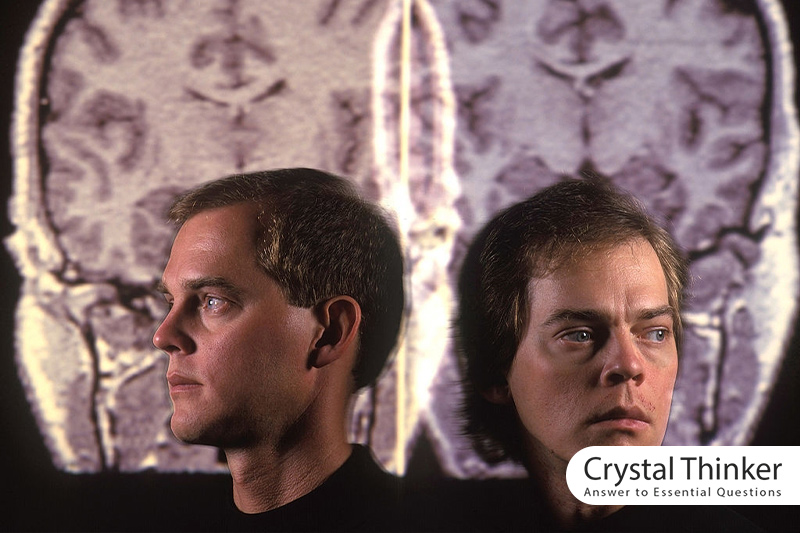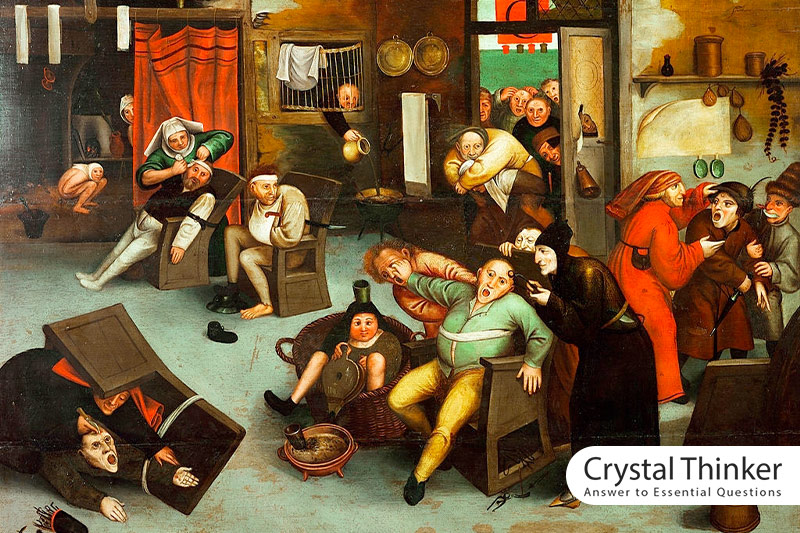In the field of psychology, cognitive dissonance is the perception of contradictory information. Different information includes actions, feelings, beliefs, values, and things in the environment or person. Let’s think of cognitive dissonance as psychological stress. People will experience a sense of anxiety when they engage in behavior that conflicts with or is opposed to one or more other tasks.
Generalities about the theory of cognitive dissonance states
The theory of cognitive dissonance states that if two actions or ideas are not psychologically compatible, people do their best to change them until the two actions are consistent (Dawson, L. L., 1999).
Often a person feels upset because of the contradiction of his beliefs with the newly understood information. For this reason, he tries to find a way to resolve the contradiction to reduce his discomfort.
Leon Festinger describes the theory of cognitive dissonance (1957) in his famous book. According to him, human beings seek internal psychological adaptation and pay less attention to mental functioning in the real world (Festinger, L., 1962).

How to change attitudes
Festinger’s (1957) theory of cognitive dissonance shows that we have intrinsic motivation and align all our attitudes and behaviors with it. In such a situation, we try to avoid inconsistencies. This principle has been called the principle of cognitive adaptation.
If a person experiences internal incompatibility, they are psychologically distressed and will experience decreased motivation and cognitive dissonance.
In such situations, people tend to make changes to justify their stressful behavior. Therefore, it tries to gain new knowledge and information to balance psychological inconsistency (rationalization).
If there is a particular inconsistency between attitudes or behaviors, people usually try to reduce or eliminate the inconsistency.

Do these methods reduce incompatibility?
It is essential to know that according to the theory of inconsistency, these methods do not reduce the inconsistency. Instead, only people in a state of cognitive dissonance take steps to reduce the degree of dissonance.
Sometimes people avoid contradictory terms and information that may increase cognitive inconsistency, also called confirmation bias.
Coping with conflicting experiences is often stressful mentally.
According to Festinger, some people solve psychological incompatibility by blindly believing what they want to think.
Humans constantly regulate the functioning of society through their mental attitudes and personal actions. (Festinger, L., 1957).
Here are some examples to make it easier for you to understand.
Read more: Common social norms

What are the relationships between cognitions?
Consonant relationship refers to two cognitions or actions compatible with each other. For example, we can mention the unwillingness to order alcoholic beverages with the main meal. In such cases, people prefer to order water instead of alcoholic beverages.
An irrelevant relationship refers to two unrelated cognitions or actions. For example, they are not wanting to drink alcohol when going out and when the person wants to get dressed.
An uncoordinated relationship refers to two cognitions or incompatible actions with each other. For example, not wanting to drink alcohol when going out, but after a person consumes more.
The degree of inconsistency
The term refers to the degree of inconsistency and the amount of discomfort caused to the person. It arises from the relationship between two inner beliefs or different inconsistent actions of one’s thoughts.

What causes cognitive dissonance?
- Effort
- Compulsory compliance behavior
- Decision making
When someone has to do something they do not want to do, there is a cognitive inconsistency, this person probably says I did not want to do it, but I did.
If a person does something, not in line with his beliefs, he will try to comply. Compulsory compliance usually manifests itself when it is not possible to change behavior. Because he has done something in the past, disharmony, then, must be reduced by reassessing that person’s attitude toward what they have done.
Festinger and Carlsmith designed an exciting experiment in 1959. They asked the experimenters to do a series of tedious tasks for an hour (Festinger, L., & Carlsmith, J. M., 1959).
For example, turn the clamps on a nail board. The attitude of the participants towards doing this was very negative and boring.
Festinger and Carlsmith’s goal was to examine whether forcing people to do a tedious task could create cognitive dissonance through forced adaptive behavior.

Festinger and Carlsmith test method
Their lab experiment asked 71 male students to do tedious tasks such as turning clamps on a nail board for an hour as participants in the investigation.
Festinger and Carlsmith paid participants 1$ or 20$ for the experiment. They expected participants to say in return for paying the other participants waiting to do so excited to complete the assigned tasks.
Most participants agreed to enter the waiting room of other participants to experiment to convince them that the experiment was boring, fun, and enjoyable.
Exciting results of this experiment
Finally, they reviewed the results. Interestingly, participants who received just 1$ showed off tedious work more fun and enjoyable than participants who received 20$.
So the results show that paying just 1$ is not enough motivation to lie. So these people get inconsistent. They believed that doing those specific things was enjoyable. Because of this, they were able to overcome this inconsistency.
But paying 20$ provides an excellent reason to spin the pins and justifies doing the boring thing. Therefore, there will be no cognitive dissonance in these people.

How to solve cognitive inconsistencies?
The following methods can reduce cognitive dissonance.
- Change existing beliefs
- Create new beliefs
- Decreasing the importance of beliefs
To reduce cognitive dissonance, you need to change one or more of your attitudes and behaviors.
Signs that you are experiencing cognitive dissonance
- General discomfort that has no apparent or obvious source
- Feeling confused
- The feeling of conflict over the subject matter of the dispute
- People know you as a hypocrite
- Awareness of conflicting views or demands, but an inability to make the right decision

Conclusion
So far, we have talked about cognitive dissonance and the emotions it creates in humans and provided helpful information in this regard. By carefully reading this article, you can minimize cognitive and behavioral inconsistencies and better control them. At the end of the article, we also mentioned the signs that indicate that you have a mental disorder.
References
Dawson, L. L. (1999). When Prophecy Fails and Faith Persists: A Theoretical Overview. Nova Religio, 3(1), 60–82. https://doi.org/10.1525/nr.1999.3.1.60
Festinger, L. (1957). A Theory of Cognitive Dissonance. Stanford University Press.
Festinger, L. (1962). Cognitive Dissonance. Scientific American, 207(4), 93–106. https://doi.org/10.1038/scientificamerican1062-93
Festinger, L., & Carlsmith, J. M. (1959). Cognitive consequences of forced compliance. The Journal of Abnormal and Social Psychology, 58(2), 203–210. https://doi.org/10.1037/h0041593








